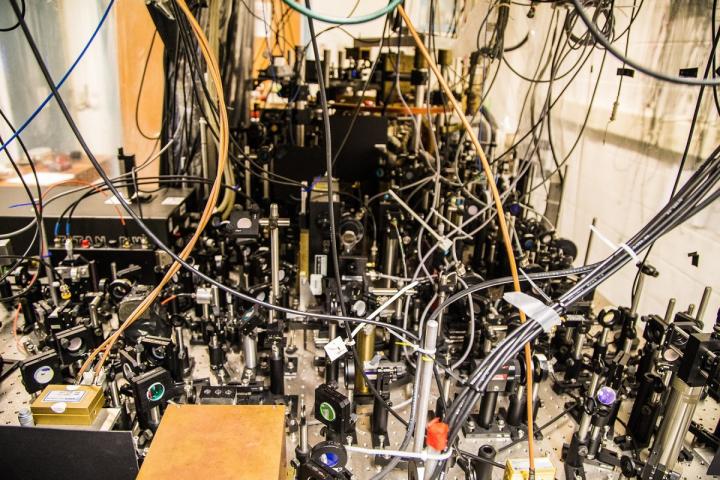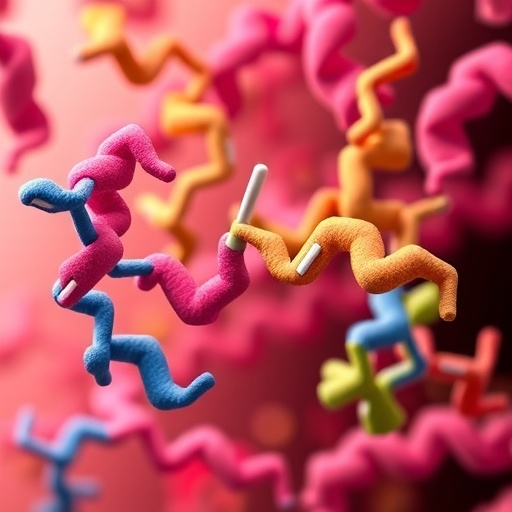
Credit: Photo courtesy Nate Follmer, Penn State
RESEARCH TRIANGLE PARK, N.C. — Researchers working on a U.S. Army project discovered a key insight for the development of quantum devices and quantum computers.
Scientists found that a class of particles known as bosons can behave as an opposite class of particles called fermions, when forced into a line.
The research, conducted at Penn State University and funded in part by the Army Research Office, an element of U.S. Army Combat Capabilities Development Command’s Army Research Laboratory, found that when the internal interactions among bosons in a one-dimensional gas are very strong, their velocity distribution transforms into that of a gas of non-interacting fermions when they expand in one dimension. The research is published in the journal Science.
“The performance of atomic clocks, quantum computers and quantum systems rely upon the proper curation of the properties of the chosen system,” said Dr. Paul Baker, program manager, atomic and molecular physics at ARO. “This research effort demonstrates that the system statistics can be altered by properly constraining the dimensions of the system. In addition to furthering our understanding of foundational principles, this discovery could provide a method for dynamically switching a system from bosonic to fermionic to best meet the military need.”
The researchers experimentally demonstrated that, when bosons expand in one dimension–the line of atoms is allowed spread out to become longer–they can form a Fermi sea.
“All particles in nature come in one of two types, depending on their spin, a quantum property with no real analogue in classical physics,” said David Weiss, Distinguished Professor of Physics at Penn State and one of the leaders of the research team. “Bosons, whose spins are whole integers, can share the same quantum state, while fermions, whose spins are half integers, cannot. When the particles are cold or dense enough, bosons behave completely differently from fermions. Bosons form Bose-Einstein condensates, congregating in the same quantum state. Fermions, on the other hand, fill available states one by one to form what is called a Fermi sea.”
The research team created an array of ultracold one-dimensional gases made up of bosonic atoms (Bose gases) using an optical lattice that uses laser light to trap the atoms. In the light trap, the system is at equilibrium and the strongly interacting Bose gases have spatial distributions like fermions, but still have the velocity distributions of bosons. When the researchers shut off some of the trapping light, the atoms expand in one dimension. During this expansion, the velocity distribution of the bosons smoothly transforms into a one that is identical to fermions.
“By fully understanding the dynamics of one-dimensional gases, and then by gradually making the gases less integrable, we hope to identify universal principles in dynamical quantum systems,” Weiss said.
Dynamical, interacting quantum systems are an important part of fundamental physics. They are also increasing technologically relevant, as many actual and proposed quantum devices are based on them, including quantum simulators and quantum computers.
“We now have experimental access to things that if you would have asked any theorist working in the field ten years ago ‘will we see this in our lifetime?’ they would have said ‘no way,'” said Marcos Rigol, professor of physics at Penn State and the other leader of the research team.
###
In addition to ARO, the U.S. National Science Foundation funded this research.
CCDC Army Research Laboratory is an element of the U.S. Army Combat Capabilities Development Command. As the Army’s corporate research laboratory, ARL discovers, innovates and transitions science and technology to ensure dominant strategic land power. Through collaboration across the command’s core technical competencies, CCDC leads in the discovery, development and delivery of the technology-based capabilities required to make Soldiers more lethal to win our nation’s wars and come home safely. CCDC is a major subordinate command of the U.S. Army Futures Command.
Media Contact
Lisa B Bistreich-Wolfe
[email protected]
Original Source
https:/
Related Journal Article
http://dx.




